Template for Termination Letter with Easy Customization
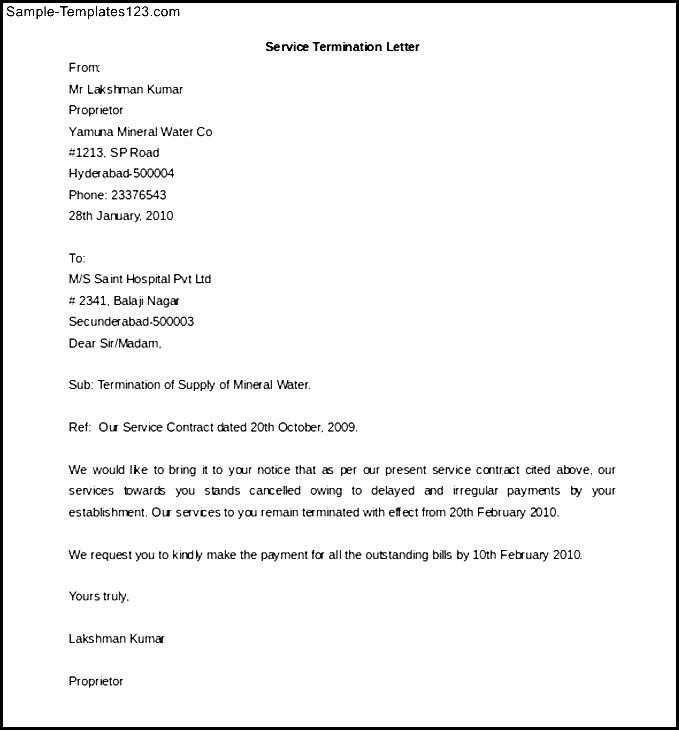
When it’s necessary to end an employment relationship, clear and respectful communication is crucial. A well-structured document can ensure both parties understand the terms and reasons behind the decision. By using a structured approach, employers can convey their message professionally and minimize potential misunderstandings.
Crafting such a document can feel daunting, but with the right guidelines, the process becomes much easier. There are essential components to include, such as specific dates, reasons for the decision, and any obligations the employee may need to fulfill. Following these best practices helps maintain professionalism throughout the process.
In this guide, we will walk through the key aspects of creating an effective notice, from its content to its delivery, ensuring a smooth transition and positive outcomes for all involved. Whether you’re new to the process or looking for a better approach, this information will provide the clarity you need.
Why Use a Termination Letter Template
Creating a formal document to end an employee’s contract can be a complex and sensitive task. Having a predefined structure can help streamline the process and ensure all necessary information is included. This approach not only saves time but also reduces the chances of overlooking crucial details that could lead to confusion or legal issues.
Consistency and Professionalism
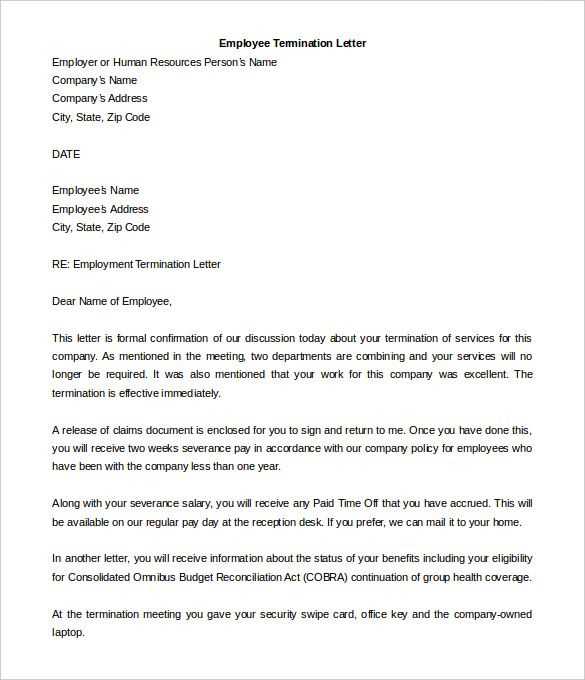
Using a predefined format ensures that every important element is addressed in a consistent manner. This promotes professionalism, as the document will be clear, respectful, and align with organizational standards. A well-constructed document demonstrates that the decision was made thoughtfully, which can preserve the company’s reputation and support a smoother transition for the employee.
Legal Protection and Accuracy
Another key benefit is the legal protection it offers. A properly structured document helps meet legal requirements by outlining the terms of the separation, ensuring that both parties understand their rights and responsibilities. This clarity can protect against potential disputes and ensure compliance with employment laws.
Key Elements of a Termination Letter
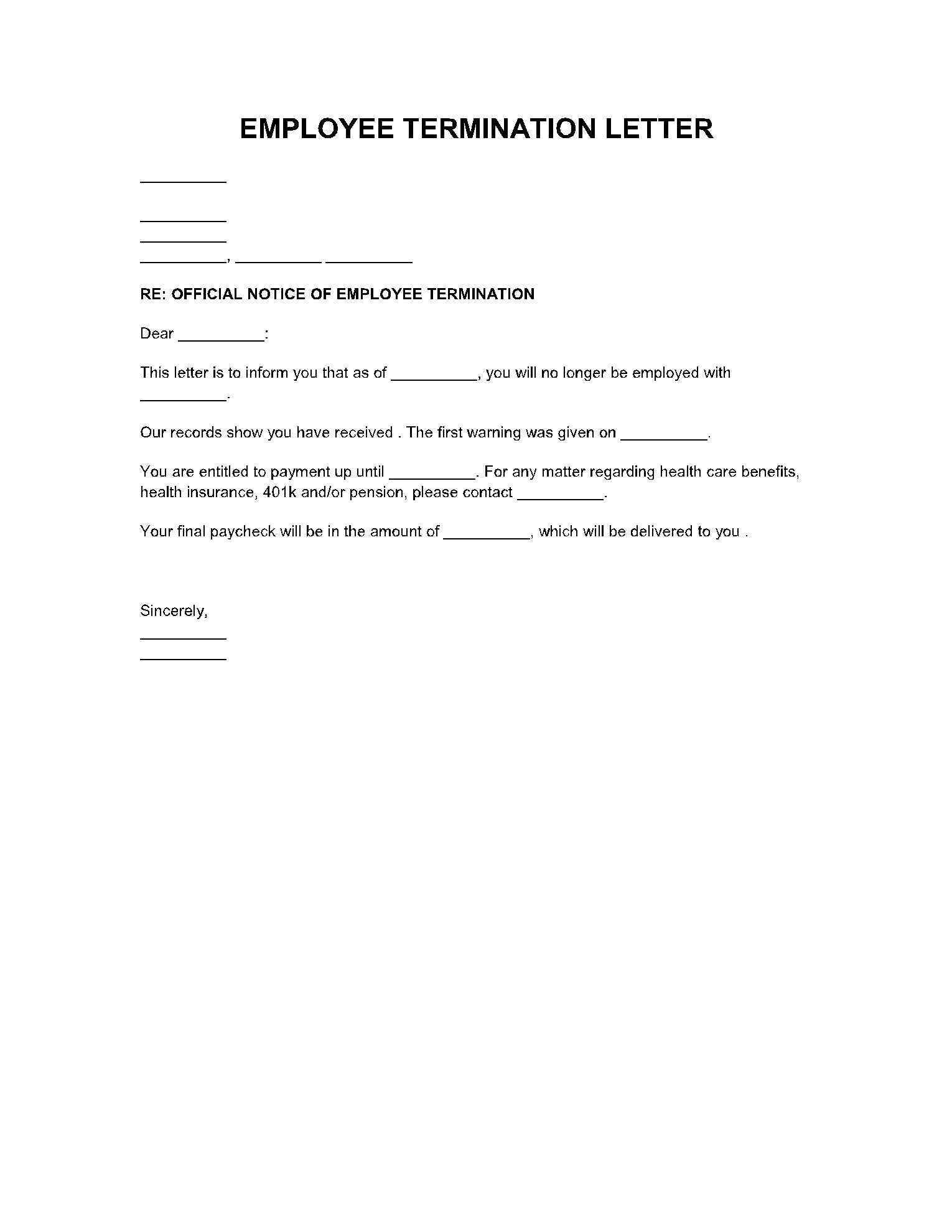
When drafting a formal document to end an employee’s employment, it’s essential to include specific components that clearly convey the message. Each section must be designed to ensure transparency and avoid any confusion or ambiguity regarding the situation. A well-constructed message will cover important aspects, such as reasons for the decision, the employee’s final obligations, and the effective date of the end of the relationship.
Essential Components to Include
The following table outlines the key elements that should be present in any formal communication regarding the end of employment:
| Element | Description |
|---|---|
| Introduction | A clear opening that identifies the purpose of the document and establishes the context. |
| Reason | A concise explanation for the decision, whether it’s performance-related, company restructuring, or other factors. |
| Effective Date | The date when the employment relationship will formally end, allowing the employee to plan accordingly. |
| Final Compensation | Information regarding any outstanding payments, including final salary, unused vacation time, or benefits. |
| Next Steps | Instructions for the employee to follow, such as returning company property or completing exit paperwork. |
Maintaining Professionalism
Including these elements ensures that the communication is both professional and informative. By being thorough and clear, employers can avoid misunderstandings and help make the transition process as smooth as possible for both parties involved.
How to Customize Your Template
Adapting a predefined structure to fit specific circumstances is crucial when formalizing the end of an employee’s contract. Customizing the content ensures the message is tailored to the situation and reflects the company’s unique policies and tone. This process involves adjusting key details, while maintaining a professional and respectful tone throughout.
Steps to Personalize the Document
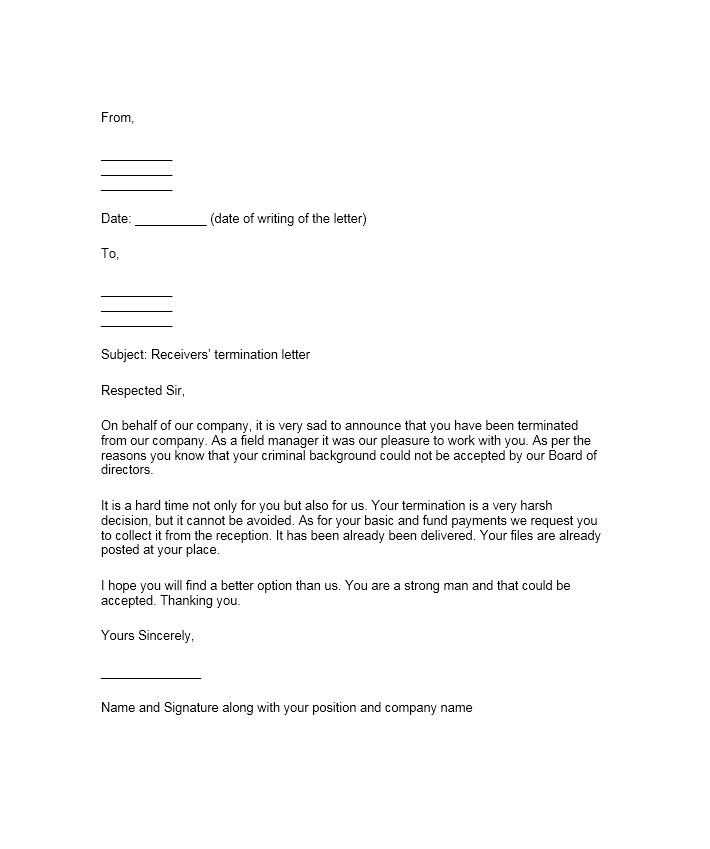
Follow these steps to effectively modify the document to meet your needs:
- Start with Basic Information: Adjust the employee’s name, position, and relevant dates to ensure accuracy.
- Modify the Reason: Be specific about the cause of the decision, whether it’s due to performance, restructuring, or other factors.
- Include Specific Instructions: Tailor any next steps to your company’s processes, such as handing in equipment or scheduling an exit interview.
- Adjust the Closing: Use a closing statement that reflects the tone of your organization, whether it’s formal or more amicable.
Consider Legal and Company Policies
When customizing, be mindful of legal obligations and company guidelines. Ensure the message complies with labor laws and includes all necessary information to prevent future disputes. Additionally, consider whether any severance packages or benefits are applicable, as these should be outlined clearly.
Legal Considerations When Writing a Letter
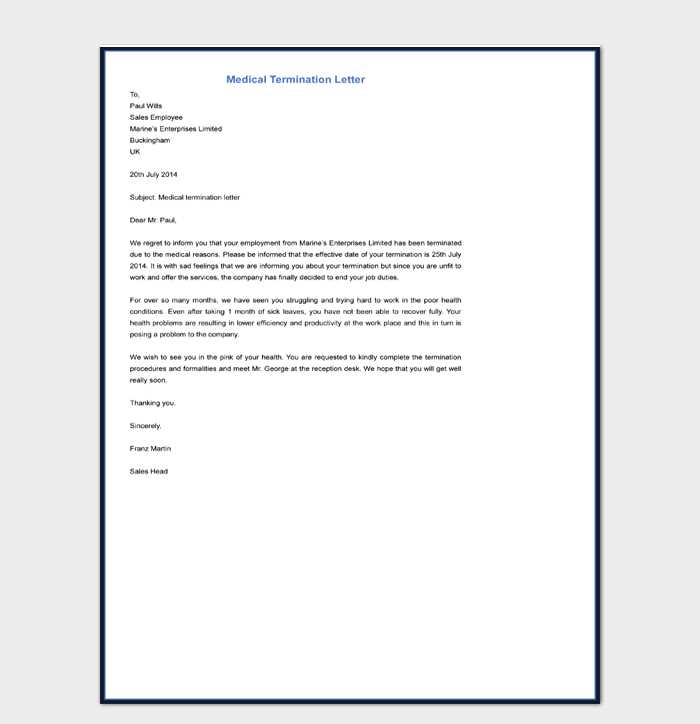
When composing a formal document to end an employee’s contract, it’s important to ensure that all legal aspects are properly addressed. Failing to do so can lead to potential disputes, legal challenges, or even claims of wrongful termination. Understanding the necessary legal elements and complying with local labor laws is essential for protecting both the employer and the employee.
Ensure Compliance with Employment Laws
Each region or country has specific regulations regarding employment contracts and their termination. It’s crucial to check the relevant labor laws and ensure that the document adheres to these legal requirements. Key considerations include:
- Notice periods required by law
- Severance pay or other compensation obligations
- Employee rights during the separation process
Protect Against Legal Disputes
To minimize the risk of legal issues, it’s essential to maintain fairness and transparency. Make sure the reasons for ending the employment are clearly stated, and avoid vague or discriminatory language. Being precise in detailing the final obligations of the employee can also prevent misunderstandings or future legal action.
Best Practices for Sending Termination Letters
Sending a formal notice to end an employee’s contract is a delicate process that requires careful attention to detail. It’s important to approach this step with professionalism and empathy to ensure the message is clear and respectful. By following best practices, employers can help minimize any negative impact on the employee while maintaining a strong, positive company image.
Deliver the Message in Person First
While sending the document is necessary, it’s best to first communicate the decision in person or through a private meeting. This shows respect and provides the employee an opportunity to ask questions or express concerns. Once the message has been delivered face-to-face, you can follow up with the official documentation to confirm the details in writing.
Use Clear and Respectful Language
When composing the document, use straightforward language that leaves no room for confusion. Avoid overly harsh or ambiguous terms that could lead to misunderstanding. It’s important to remain professional, offering the necessary information without sounding critical or dismissive. A respectful tone can help the employee feel that the decision was handled fairly, even if it is difficult.
Common Mistakes to Avoid in Letters
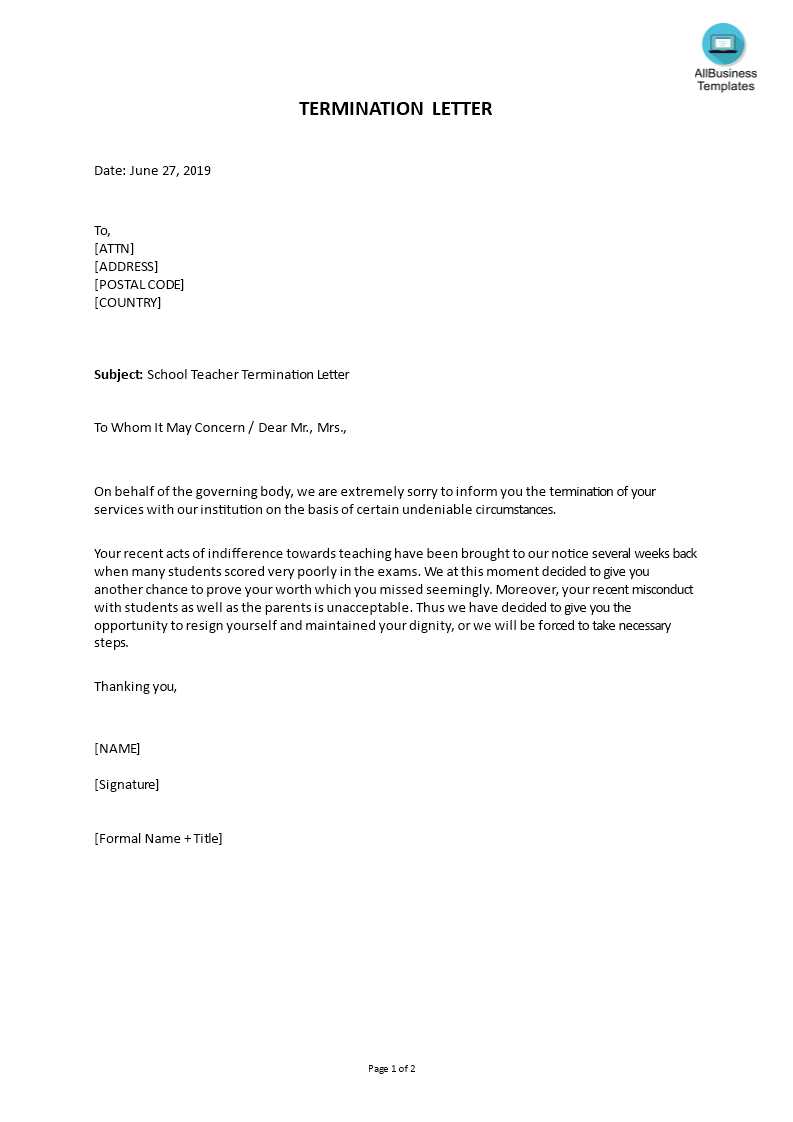
When drafting a formal communication to end an employee’s contract, it’s easy to overlook critical details or fall into common traps that can lead to confusion or legal issues. Being aware of these common mistakes can help ensure that the document is clear, professional, and legally sound.
Using Vague Language
One of the most common mistakes is using vague or unclear language. It’s essential to be specific about the reasons for the decision, as well as any expectations or next steps for the employee. Ambiguity can lead to misunderstandings and potentially cause legal complications, especially if the reasoning behind the decision is questioned later.
Failing to Follow Legal Guidelines
Another mistake is not ensuring compliance with employment laws. Different regions and countries have specific rules regarding contract termination, including notice periods and severance pay. Failing to follow these regulations can lead to legal challenges or even financial penalties. Always review applicable laws before finalizing the document.